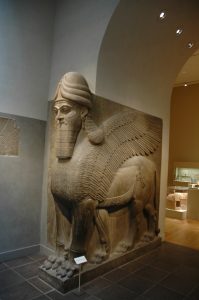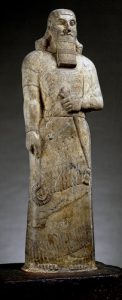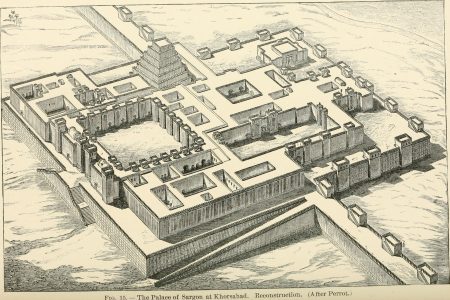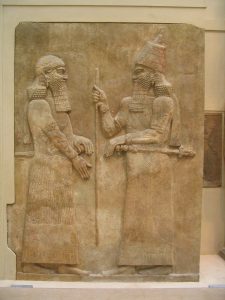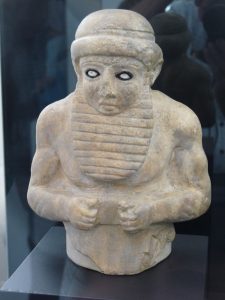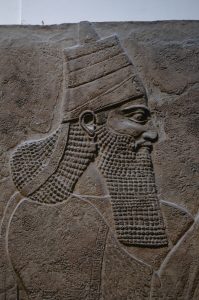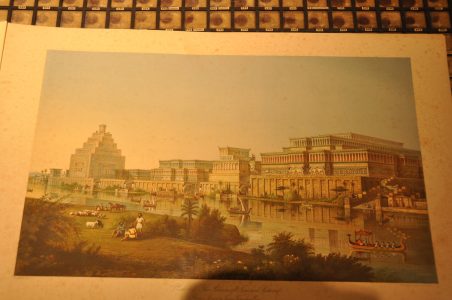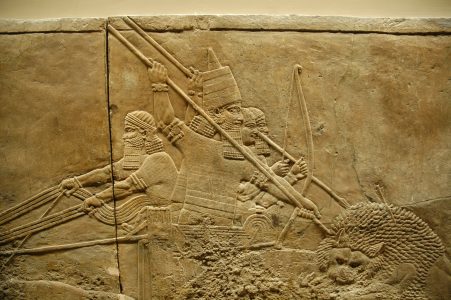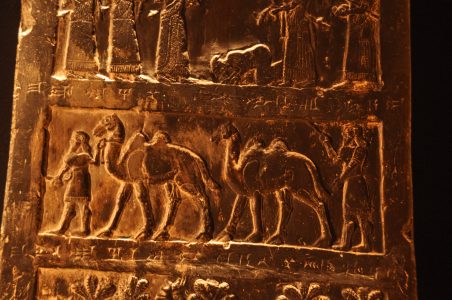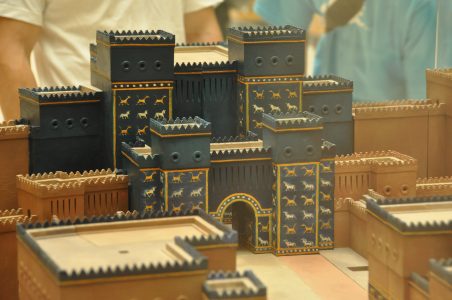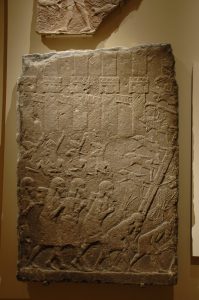Afgelopen zondag is de coalitie van Iraakse regeringstroepen en de Koerdische Peshmerga begonnen aan een grootschalig offensief om Mosoel te bevrijden. Het nieuws komt druppelsgewijs binnen. De coalitie ligt voor op schema, verschillende dorpen in de omgeving van Mosoel zijn al bevrijd en de ruïnes van Nimrud zijn ontzet. Op het moment is er nog veel onduidelijk vanwege de oorlogsmist. Zodra de bevrijding van Mosoel is voltooid zal ik hier uiteraard een column aan wijden. Vandaag ga ik het echter hebben over Hatra.
Na de val van het Nieuw-Assyrische Rijk (744-605 v. Chr.) werd het Assyrische grondgebied grotendeels overgenomen door de Babyloniërs (626-539 v. Chr.). Later verenigden de Achaemeniden (550-330 v. Chr.) Groot-Iran, Anatolië en Centraal-Azië onder hun gezag en onderwierpen ze het Babylonische Rijk. Het Achaemenidische Rijk werd ten val gebracht door Alexander de Grote (336-323 v. Chr.), na wiens dood het Nabije Oosten verdeeld raakte onder verschillende Macedonische generaals. De afstammelingen van generaal Seleucus(312-141 v. Chr.) kwamen over Mesopotamië te heersen en stichtten daar verschillende Griekse steden. In 141 v. Chr. werd Mesopotamië veroverd door de Parthen, een Iraans volk afkomstig uit het huidige Turkmenistan. Zij waren de eerste Iraanse dynastie die er na de val van het Achaemenidische Rijk in slaagde Iran en Irak in één rijk te verenigen.
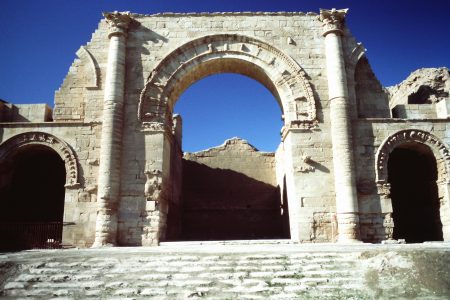
Tempel van Šamaš, centrale Iwan.
De Parthische periode
De Parthische periode (141 v. Chr. – 224 n. Chr.) is in vele opzichten een keerpunt in de geschiedenis van het Oude Nabije Oosten. In Mesopotamië stierven de eeuwenoude Akkadische taal en cultuur uit en in de Levant vervaagden de scheidslijnen tussen de verschillende etnische groepen. In beide regio’s kwam een soort Aramesemengcultuur op. Intussen bleef de Griekse cultuur die door de opvolgers van Alexander over het Nabije Oosten was verspreid ook na de val van deze opvolgersstaten populair onder de intellectuele elite. Op politiek gebied werd het Nabije Oosten in tweeën gedeeld door de Romeinen en de Parthen, die over respectievelijk de Levant en Mesopotamië heersten. Deze wereldmachten waren militair aan elkaar gewaagd, waardoor het meestal niet tot oorlog kwam. Deze machtsbalans had een langdurige periode van vrede en welvaart tot gevolg.
Hatra als karavaanstad
In deze periode kwam de stad Hatra tot bloei. De stad werd mogelijk gesticht op initiatief van de Macedonische Seleuciden (321-141 v. Chr.). Gelegen in de woestijnsteppe van Noord-Irak, tussen de Eufraat en de Tigris, diende het als pleisterplaats voor karavanen die vanuit Mesopotamië naar de Levant, Anatolië of Arabië trokken. Dergelijke pleisterplaatsen – ook wel karavaansteden geheten – waren een nieuw verschijnsel. Voorheen kwamen steden meestal op een natuurlijke manier tot stand langs rivieren of aan zeeën. Bij Hatra was dat niet het geval. Deze stad lijkt bewust te zijn gesticht in een gebied dat niet al te vruchtbaar was, met als enige doel de langeafstandshandel te bevorderen. Deze had een flinke boost gekregen sinds de Chinezen handelscontacten hadden aangeknoopt met de Parthen en zo de Zijderoute hadden geopend. Uiteraard vereiste het stichten en economisch rendabel houden van dergelijke karavaansteden ook nieuwe planologische vaardigheden.
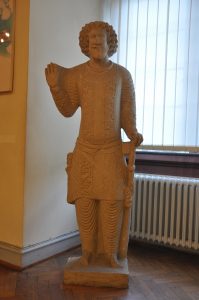
Een van de koningen van Hatra.
Hatra als ontmoetingsplaats van culturen
In Hatra woonden verschillende etnische groepen naast elkaar. Hoewel de stad was gesticht door de Macedonische Seleuciden en later tot bloei kwam onder de Iraanse Parthen, werd de stad voornamelijk bevolkt door een Aramees sprekende bevolking. Een deel van deze ‘Arameeërs’ identificeerde zich mogelijk nog als Assyriër. In de stad woonden ook Arabieren en in de loop van de eerste en tweede eeuw n. Chr. lijken zij de macht in de stad te hebben overgenomen. De Arabische koningen van Hatra stichtten het zogenaamde ‘koninkrijk Araba’, dat als cliëntstaat van het Parthische Rijk een zekere autonomie kende. De culturele diversiteit in Hatra wordt goed geïllustreerd door de goden die er vereerd werden: van Akkadische goden als Ashur, Nergal en Šamaš tot Aramese goden als Atargatis en Baal-Shamayn en van de Griekse god Hermes tot de Arabische godin Allat.
Hatra als bolwerk
Als karavaanstad gelegen op de grens tussen het Romeinse en Parthische Rijk was Hatra van groot strategisch belang. De stad kreeg gedurende haar bestaan meerdere malen te maken met belegeringen. Op zijn veldtocht van 116-117 n. Chr. tegen te Parthen probeerde de Romeinse keizer Trajanus de stad in te nemen, maar zonder succes. Hij bezette Mesopotamië een jaar lang, maar kon zijn veroveringen niet consolideren omdat hij de karavaansteden niet in handen had. Hetzelfde overkwam Septimus Severus in 198-199 n. Chr. Toen het Parthische Rijk in 224 n. Chr. ten val kwam verklaarden de koningen van Araba zich onafhankelijk. Pas in 241 n. Chr. wist de Sasanidischekoning Shapur I Hatra te onderwerpen. Volgens een legende viel de stad pas nadat de prinses Nadira, de dochter van de koning van Araba, verliefd werd op Shapur en de poorten voor hem opende.
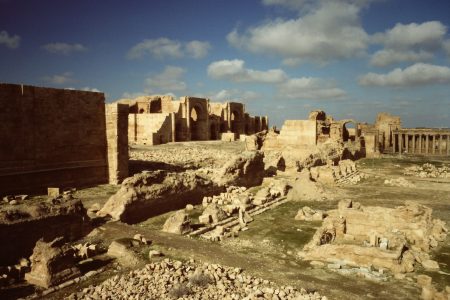
Grote tempel van Šamaš.
Hatra na de val
Nadat Shapur Hatra had ingenomen besloot hij de stad te verwoesten. Hij zag waarschijnlijk in dat dergelijke goed verdedigbare en autonoom handelende karavaansteden een gevaar vormden voor zijn ambities tot centralisatie. Deze verwoesting was echter maar zeer ten dele geslaagd. Tot voor kort stond Hatra namelijk bekend als een van de best bewaarde karavaansteden. Veel tempels en muren stonden nog fier overeind, als getuigen van de metropool die daar eens lag. In maart 2015, ongeveer gelijktijdig met de ruïnes van Dur-Sharrukin en Kalhu, heeft IS ook de nog zichtbare ruïnes van Hatra verwoest. Mogelijk kan de exacte schade binnenkort worden vastgesteld.
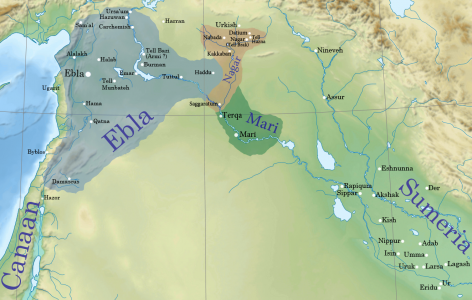

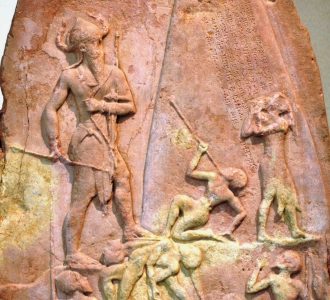
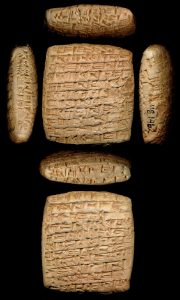
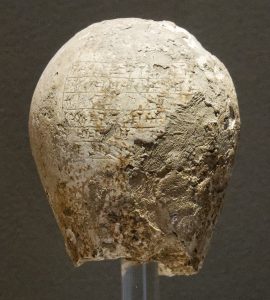
![Plattegrond van een Parthische tempel in Ashur. Door Udimu (naar: Colledge, The Parthians, 126, fig. 32 (c)) [GFDL (http://www.gnu.org/copyleft/fdl.html), CC-BY-SA-3.0 (http://creativecommons.org/licenses/by-sa/3.0/) or CC BY 2.5 (http://creativecommons.org/licenses/by/2.5)], via Wikimedia Commons.](http://sargasso.nl/wp-content/uploads/2016/10/Assur_temple-231x300.jpg)
